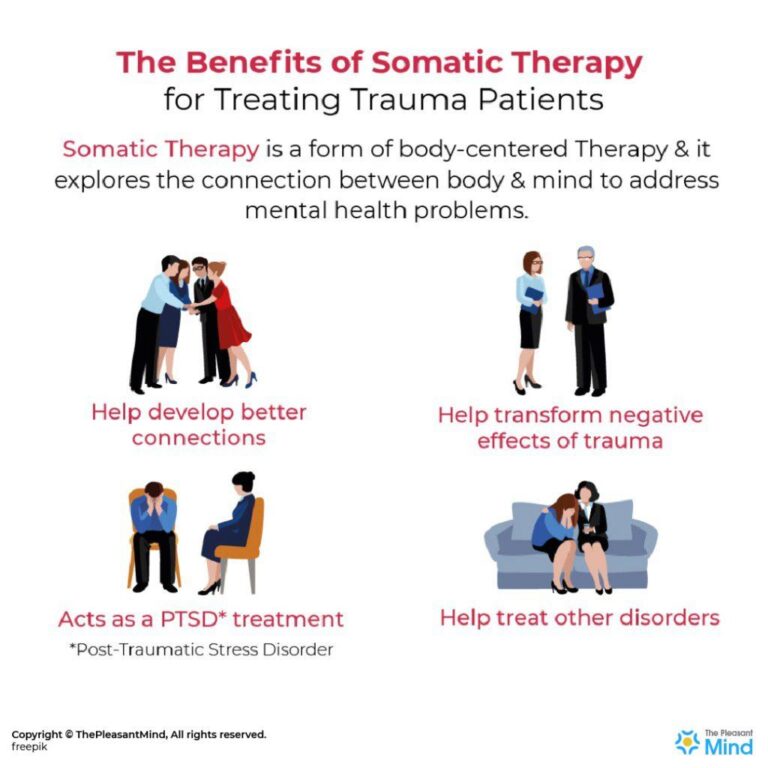In a world where mental health conversations are finally coming into the spotlight, the journey to healing is becoming more holistic and hopeful. One of the most exciting approaches gaining attention is somatic therapy—a practice that invites us to reconnect with our bodies as a powerful pathway to recovery. Trauma can leave marks not just on the mind but deeply embedded in our physical being, often beyond words. Somatic therapy offers a hopeful invitation to listen to these bodily sensations, release stored tension, and reclaim a sense of safety and peace from within. If you’ve ever felt stuck in your healing journey or curious about gentle yet transformative ways to nurture yourself, this exploration of “Healing Through the Body” might just open new doors toward trauma recovery and lasting wellness. Let’s dive in!
Table of Contents
- Understanding the Mind-Body Connection in Trauma Healing
- Techniques in Somatic Therapy That Foster Deep Emotional Release
- Creating a Safe Space for Your Body to Heal and Rebuild Trust
- Practical Steps to Integrate Somatic Practices Into Your Daily Life
- Closing Remarks
Understanding the Mind-Body Connection in Trauma Healing
Trauma is not only stored in our memories but often deeply embedded within the body’s tissues, muscles, and nervous system. This intricate connection between mind and body means that healing can happen most effectively when we address both simultaneously. When emotions are suppressed or experiences are too overwhelming to process consciously, the body can carry that tension as physical sensations, chronic pain, or even illness. Somatic therapy acknowledges this truth by tuning into these bodily signals, allowing the mind to reconnect with sensations that have been blocked or ignored. This holistic approach unlocks the potential for profound relief by facilitating a dialogue between what the body remembers and what the mind may have forgotten.
Through gentle movement, breathwork, and mindful awareness, somatic therapy helps individuals:
- Release held trauma that manifests as muscular tightness or other bodily symptoms.
- Re-establish safety within the body, promoting emotional regulation and grounding.
- Empower the nervous system to shift from fight-or-flight responses toward restoration and calm.
By embracing this mind-body synergy, healing becomes an embodied experience rather than a solely cognitive one, offering a gateway to resilience, balance, and ultimately, freedom from the shadows of trauma.
Techniques in Somatic Therapy That Foster Deep Emotional Release
Somatic therapy expertly harnesses the power of the body as both a vessel and a gateway to healing, allowing emotions trapped within physical tissues to surface and be released. Techniques such as body scanning, breath work, and mindful movement encourage individuals to reconnect with bodily sensations, gently uncovering suppressed feelings linked to trauma. By fostering this embodied awareness, clients often experience profound relief as the tension that once sat rigidly within muscles or the nervous system begins to dissolve. This reconnection not only alleviates emotional burdens but also cultivates a sense of safety and presence within oneself.
Another powerful approach lies in the use of touch therapy and somatic experiencing, where gentle, intentional contact or guided visualization helps clients access memories and emotions held beneath conscious awareness. The practitioner’s attuned presence offers the relational safety necessary for deep emotional exploration and release. In these moments, the body isn’t just a site of healing—it actively participates in dissolving trauma’s grip. This synergy between body and mind paves the way for lasting transformation, empowering individuals to reclaim wholeness and resilience from within.
- Body Scanning: Cultivates awareness of tension and blocked energy.
- Breath Work: Regulates nervous system and unlocks emotional expression.
- Mindful Movement: Releases physical and emotional rigidity.
- Touch Therapy: Enhances connection and facilitates safe release.
- Somatic Experiencing: Gently processes trauma through sensation.
Creating a Safe Space for Your Body to Heal and Rebuild Trust
Establishing a nurturing environment where your body feels safe is the first and most crucial step toward genuine healing. Trauma often leaves the body in a state of hypervigilance or shutdown, so it’s vital to create moments that invite relaxation and openness. This can be as simple as dedicating time each day to deep breathing exercises or engaging in mindful movement that honors your physical limits. When the body senses safety, it begins to lower stress responses, allowing natural healing mechanisms to activate and rebuilding trust in its own wisdom.
To cultivate this sanctuary, consider integrating habits that foster gentle connection:
- Grounding techniques: Use sensations like feeling your feet on the floor or holding a soft object to anchor yourself.
- Safe touch: Gentle self-massage or comforting pressure can communicate safety to nervous systems.
- Mindful pauses: Allow yourself breaks during overwhelming moments to check in with bodily sensations without judgment.
Over time, these intentional practices teach your body that it can relax, trust, and respond compassionately to its own needs—laying the foundation for profound trauma recovery.
Practical Steps to Integrate Somatic Practices Into Your Daily Life
Incorporating somatic practices into your daily routine doesn’t have to be overwhelming. Start with simple moments of mindful awareness—pause during your day to tune into how your body feels. This could be as easy as noticing the rhythm of your breath or the sensation of your feet grounding into the floor. Small, consistent habits like these create a powerful foundation for reconnecting with your body’s wisdom.
To deepen your practice, consider integrating activities that stimulate body-mind connection such as:
- Gentle stretching or yoga: Moving slowly with attention helps release tension and fosters presence.
- Body scans: Take a few minutes to mentally scan your body for areas of tightness or discomfort, then breathe into those spots to promote relaxation.
- Expressive movement: Dance freely or engage in any movement that feels good without judgment, encouraging emotional release through the body.
- Grounding exercises: Techniques like feeling your feet firmly on the ground or imagining roots growing from your body can enhance stability and self-awareness.
Making space for these practices daily nurtures a compassionate relationship with your body, empowering your healing journey from the inside out.
Closing Remarks
In the journey of healing from trauma, the body often holds the key that the mind alone cannot unlock. Somatic therapy offers a hopeful path by reconnecting us with the physical sensations and experiences that shape our emotional well-being. By honoring the wisdom of the body, we open doors to profound recovery, resilience, and renewed empowerment. If you or someone you know is navigating the complexities of trauma, embracing somatic practices might just be the gentle, effective step toward reclaiming wholeness and peace. Remember—healing isn’t just a destination; it’s a vibrant, ongoing journey that begins with the body’s own language of restoration.

